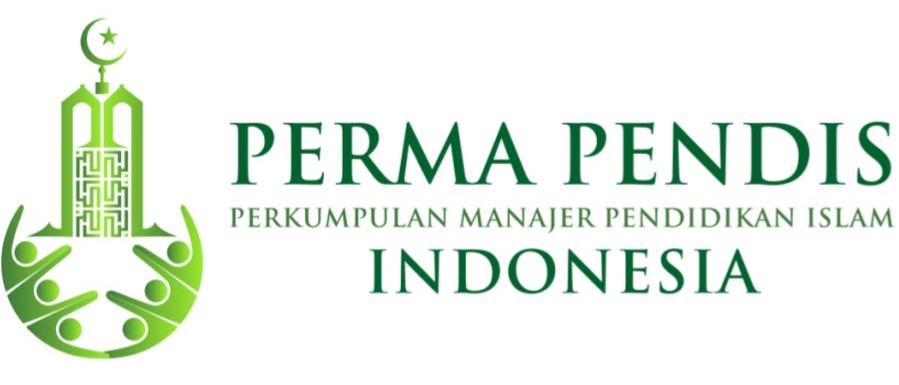Characters in Audio Visual-Based Teaching Materials in Thematic Learning in Elementary Schools
DOI:
https://doi.org/10.29240/jsmp.v6i2.4785Keywords:
Character, Teaching Materials, Audio Visual, Thematic LearningAbstract
This scientific article is motivated by the lack of character in students, where as we know today's technological advances can make the character decline in students, but if technology is used properly there will be many benefits, where most students in Indonesia currently With gadgets, technological advances can have both positive and negative impacts. The purpose of this research is to instill the character of students through the use of audio-visual-based teaching materials, such as videos. This study uses a qualitative method with the type of library research (library research), while data collection uses documentation techniques, namely data collection or from books or literatures and journals that discuss "Character in Audio-visual Based Teaching Materials in Thematic Learning. in elementary school". The data analysis technique uses the technique of drawing conclusions by identifying various special characteristics of a message in an objective, systematic and generalist manner. The results of this study are Characters in Audio-visual-Based Teaching Materials In Thematic Learning in Elementary Schools, of course there are various ways that a teacher can do in instilling character in students, one of which is here by using audio-visual-based teaching materials with theme 4 (healthy is healthy). important) sub-theme 3 (how to maintain the health of the circulatory system in humans) in fifth grade elementary school there are 8 characters that teachers can instill, the first being religious, the second being disciplined, the third being environmental care, the fourth being curiosity, the fifth being being responsible, the sixth being independent. , the seventh is social care, the eighth appreciates achievement.
Downloads
References
Aina, DK (2020). Freedom to Learn in Ki Hajar Dewantara's View and Its Relevance for the Development of Character Education. Indonesian Philosophy Journal, 3(3), 619.
Arikunto, S. (2013). MI Teaching Material Development.
Aziz, F. (2020). Development of Thematic Short Stories with the Theme of Loving Plants and Animals Using Video-Based Powtoon Applications. 2(1), 341.
Budiarso, USA (2016). Development of Teaching Materials Based on the Hynoteaching Method to Motivate Junior High School Students in Learning Science on Renewable Energy Materials. Journal of Vein Sains, 3(2), 354.
Ciptaningrum, GR (2018). Application of Thematic Learning at Cangkrep Kidul Elementary School, Purwerejo District, Purwerejo Regency. PGSD Journal, 1(684), 435.
Dadi, S. (2017). Efforts to Improve Students' Ability in Making RPP by Implementing Project Based Learning in Thematic Learning Lectures at PGSD FKIP Bengkulu University. Journal of PGSD: Scientific Education of Elementary School Teachers, 10(1), 321.
Elvarita, A., & Etc. (2020). Development of E-Module Based Soil Mechanics Teaching Materials in the Building Engineering Education Program. Journal of Civil Engineering Education, 9(1), 321.
Hayati, N., & Markamah. (2021). Implications of Aspects of Indonesian Language Skills on Synchronous Linguistics in Class IV Thematic Books SD.MI Curriculum 2013. Equatorial Education Journal of Indonesian Language and Literature Learning, 4(1), 224.
Hermawan, GS (2016). Problems in the Implementation of Integrated Learning in the Japanese Language Education Study Program. Journal of Language, Arts and Teaching, 13(1), 234.
Khulsum, U., & Etc. (2018). Development of Short Story Writing Teaching with Media Storyboards for Class X High School Students. 1(1), 112.
Majid, A. (2017). Integrated Thematic Learning. PT. Rosdakarya Youth.
Mohammad. (2020). Multicultural Education in the World of Education in Indonesia. Journal of Nusantara Education, 1(1), 221.
Nasution, AR (2013). MI Teaching Material Development. LP2 STAIN Curup.
Nurdyansyah, & Riananda, L. (nd). Developing ICT-Based Learning to Improve Learning Outcomes IPA of SD Fish Market in Sidoarjo. 1(2), 929–930.
Pinahayu, AR, & Etc. (2018). Implementation of the Winggeom Application for the Development of Teaching Materials in Junior High Schools. 1(2), 345.
Rakhmadina, NL (2020). Development of Teaching Materials Handout of Natural Material-Based Senkolase Materials for Grade IV Elementary School. 8(2), 228.
Rusman. (2012). Learning Models. King of Graindo Persada.
S, A., Sadiman, & Etc. (2006). Educational Media, Development and Utilization. PT. King Grafindo Persada.
Sadiman, A. (1996). Learning Media. Press Eagle.
Sadjana, N. (1973). Teaching Media. Library Two.
Sulaeman, AH (1985). Audio Visual Media for Teaching, Information and Counseling. PT. grammar.
Sundari, R. (2017). The use of LKS with a Scientific Approach based on Discovery Learning in the Learning of Acid and Base Solutions. Scientific Journal of Kanderang Tingang, 8(2), 217.
Yahya, MS (2018). Character Education through School Culture. Mediatama's pitch.


















